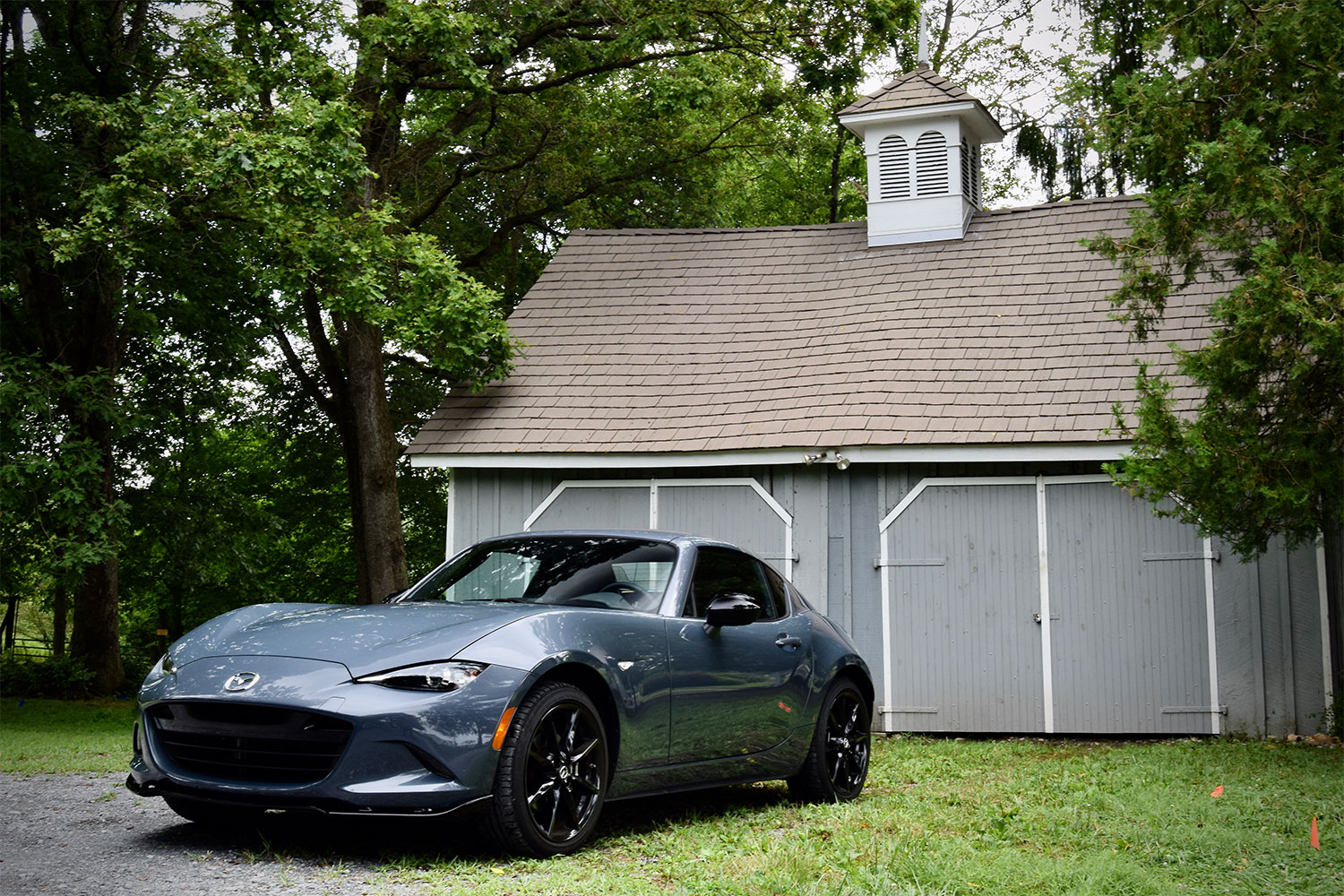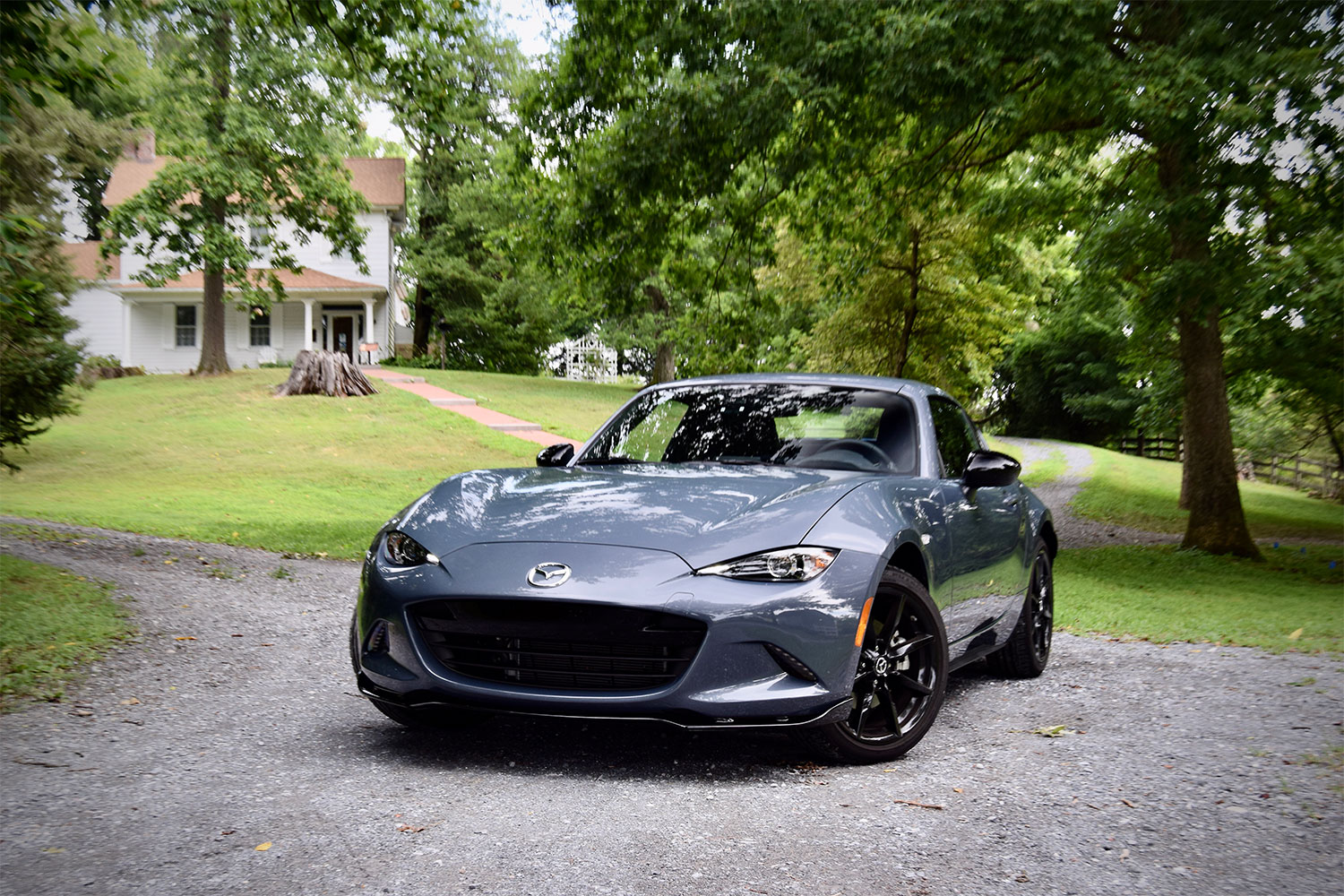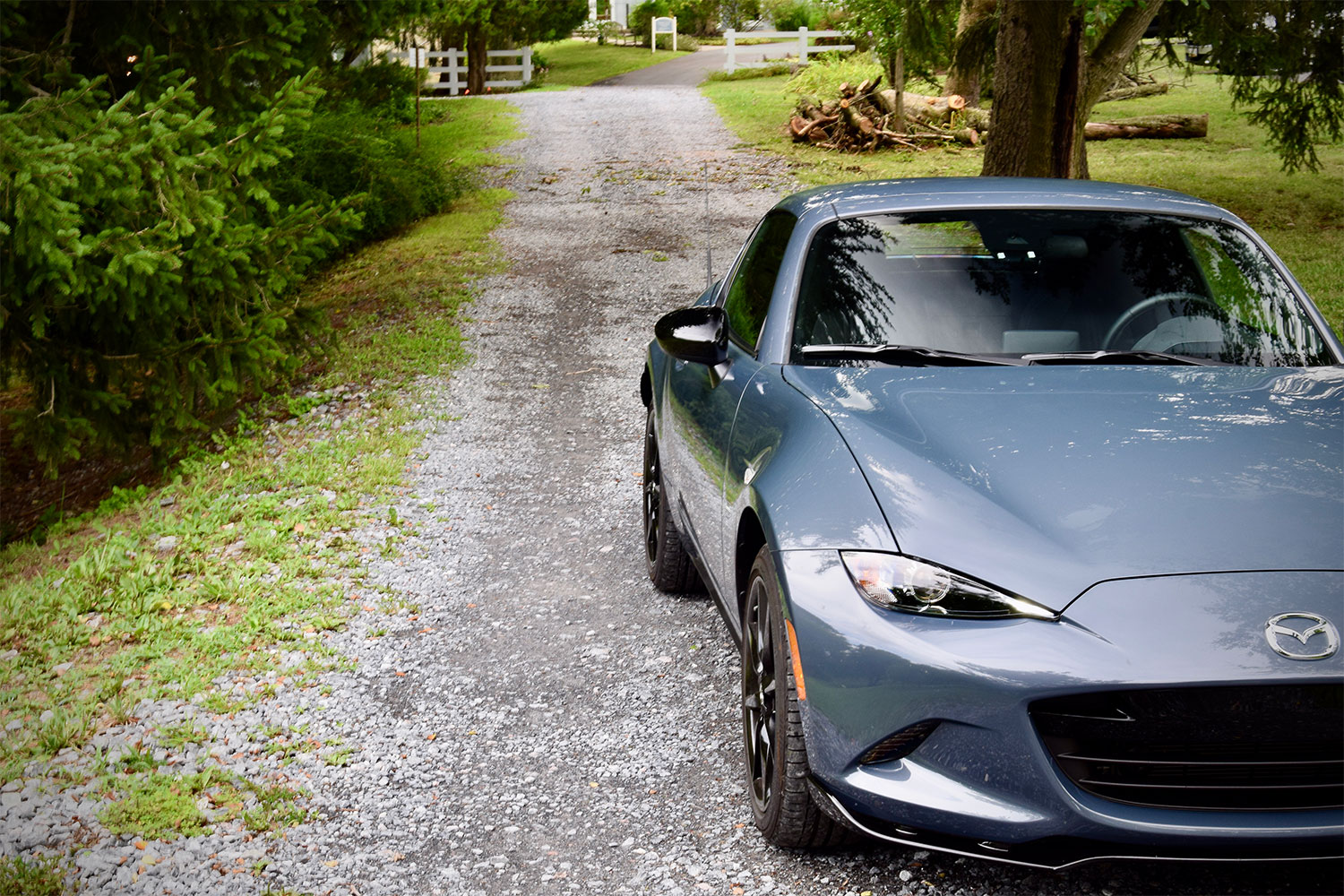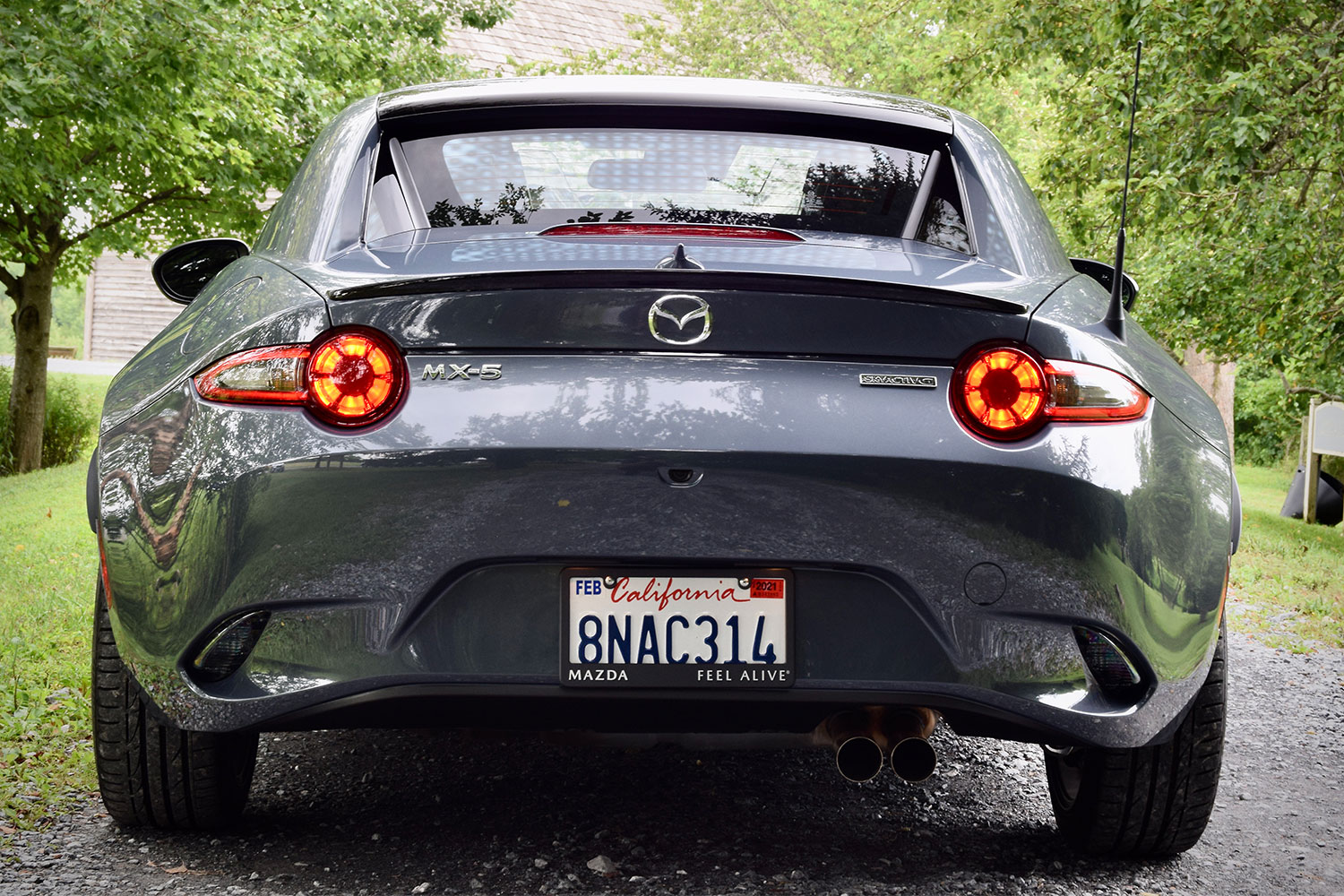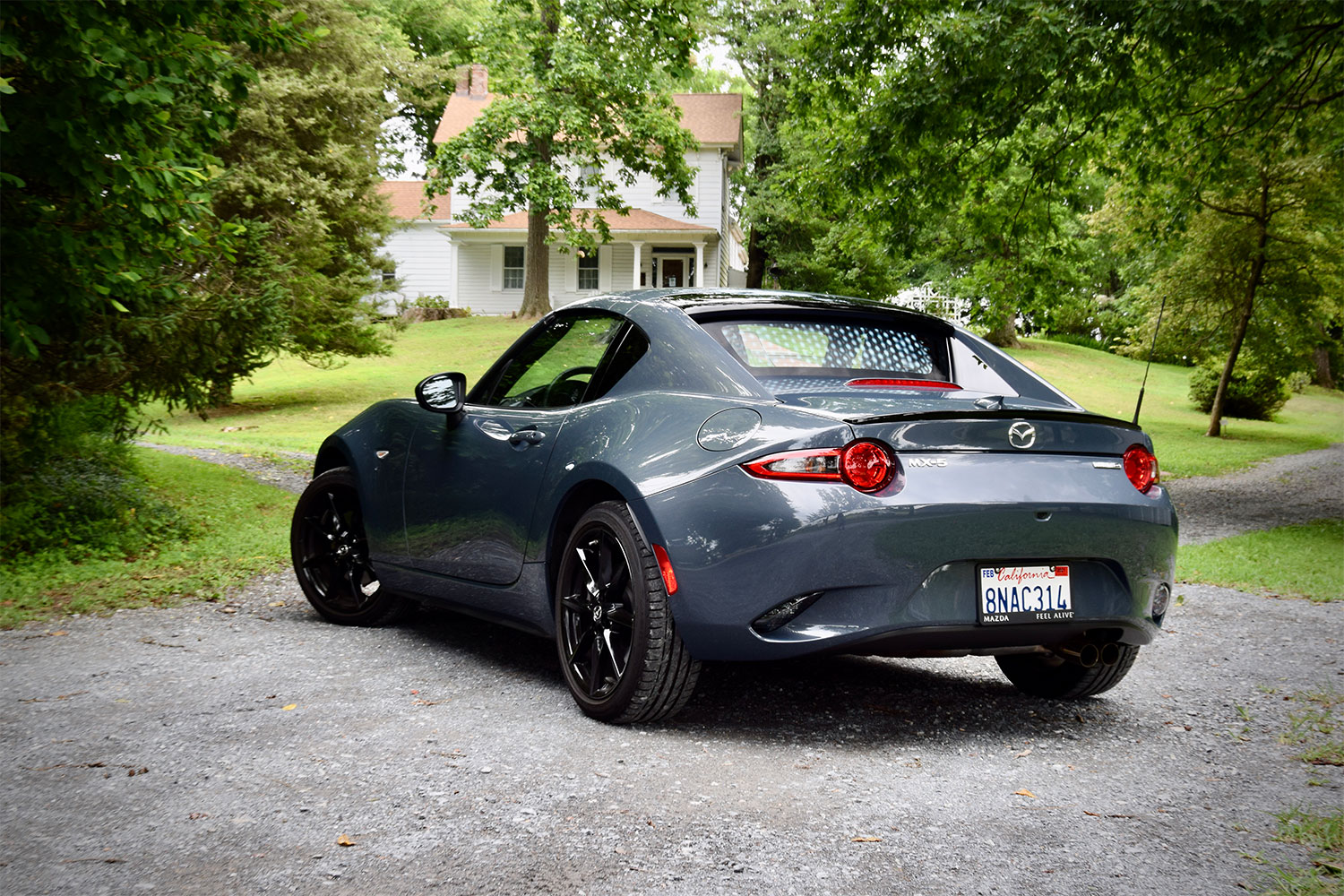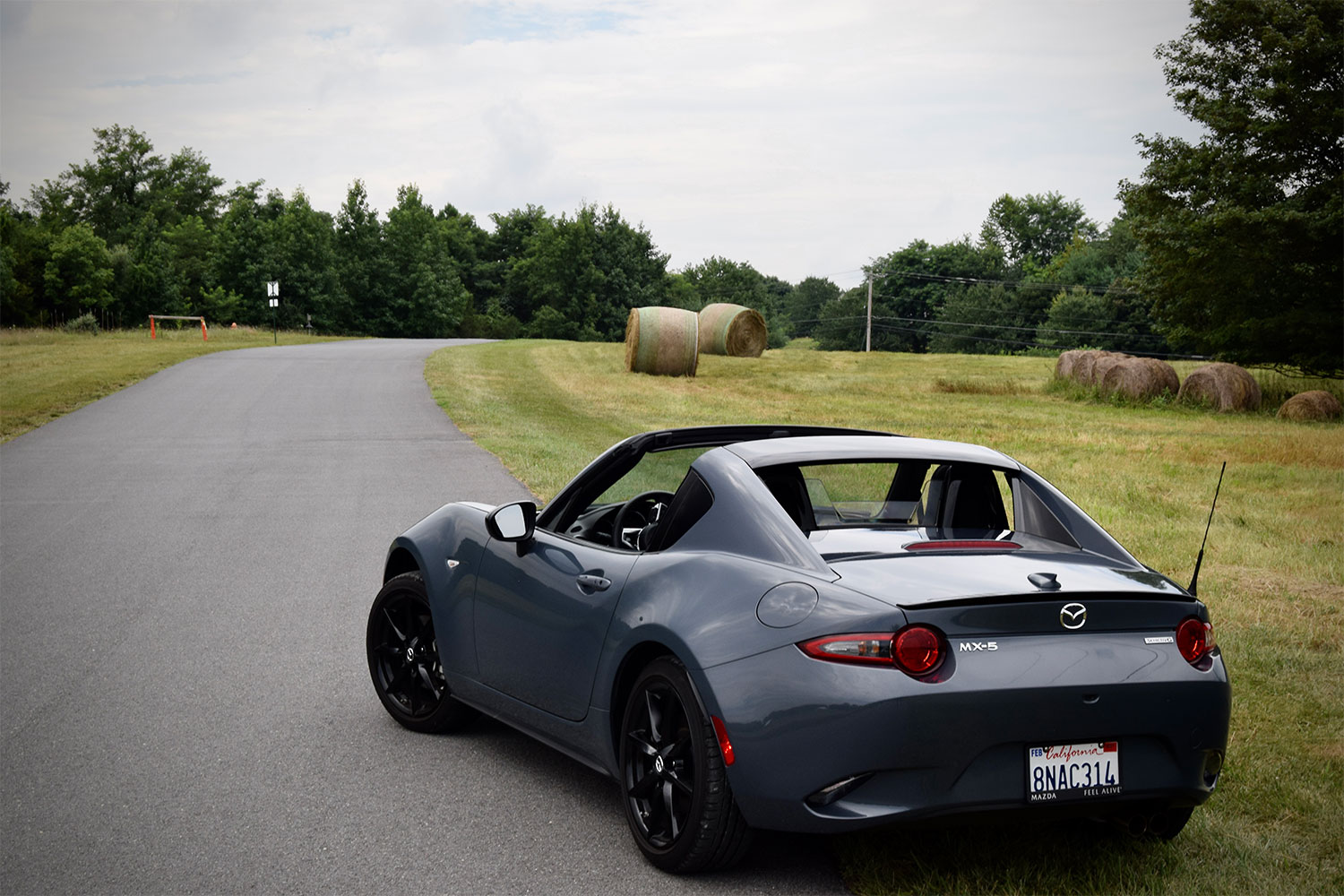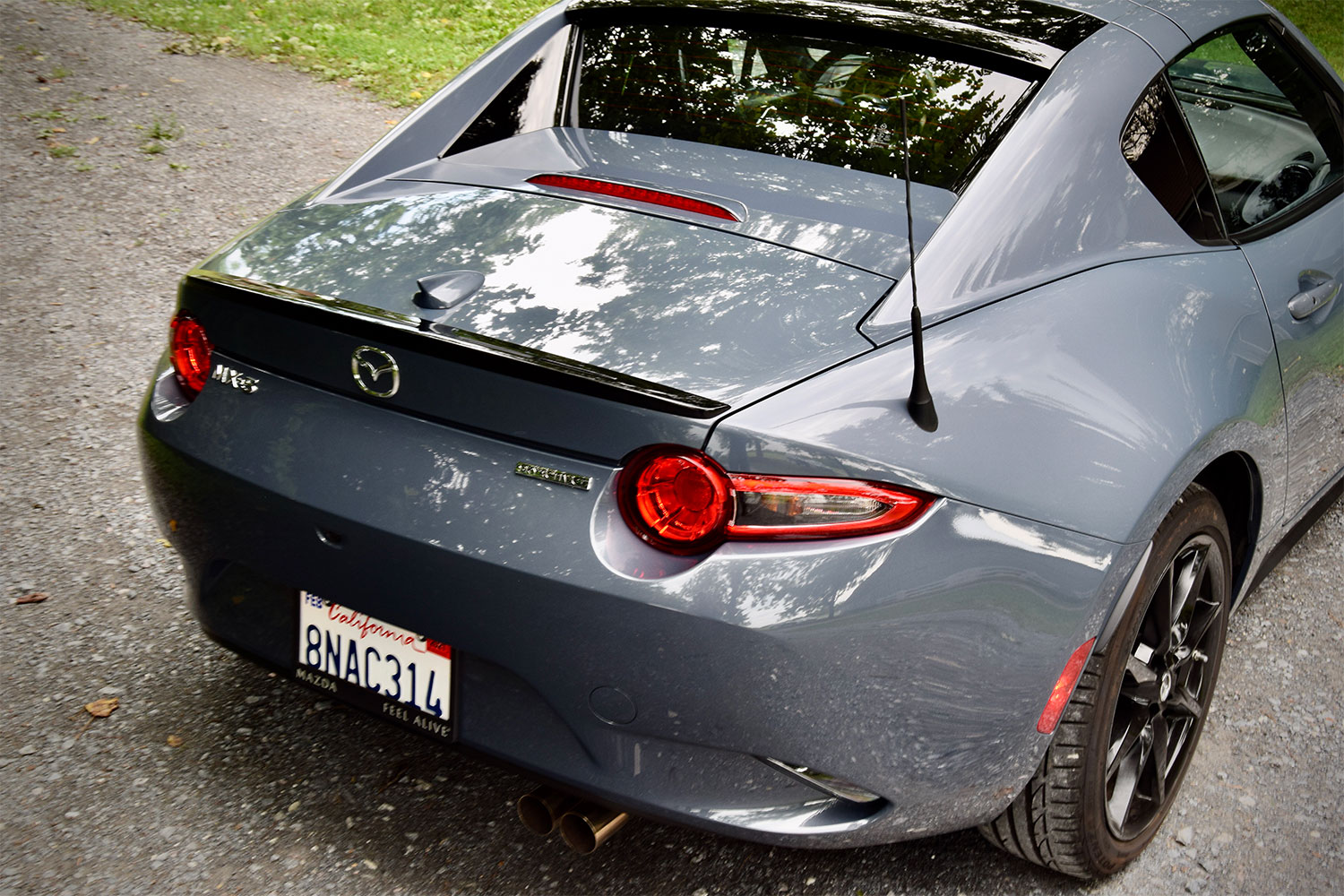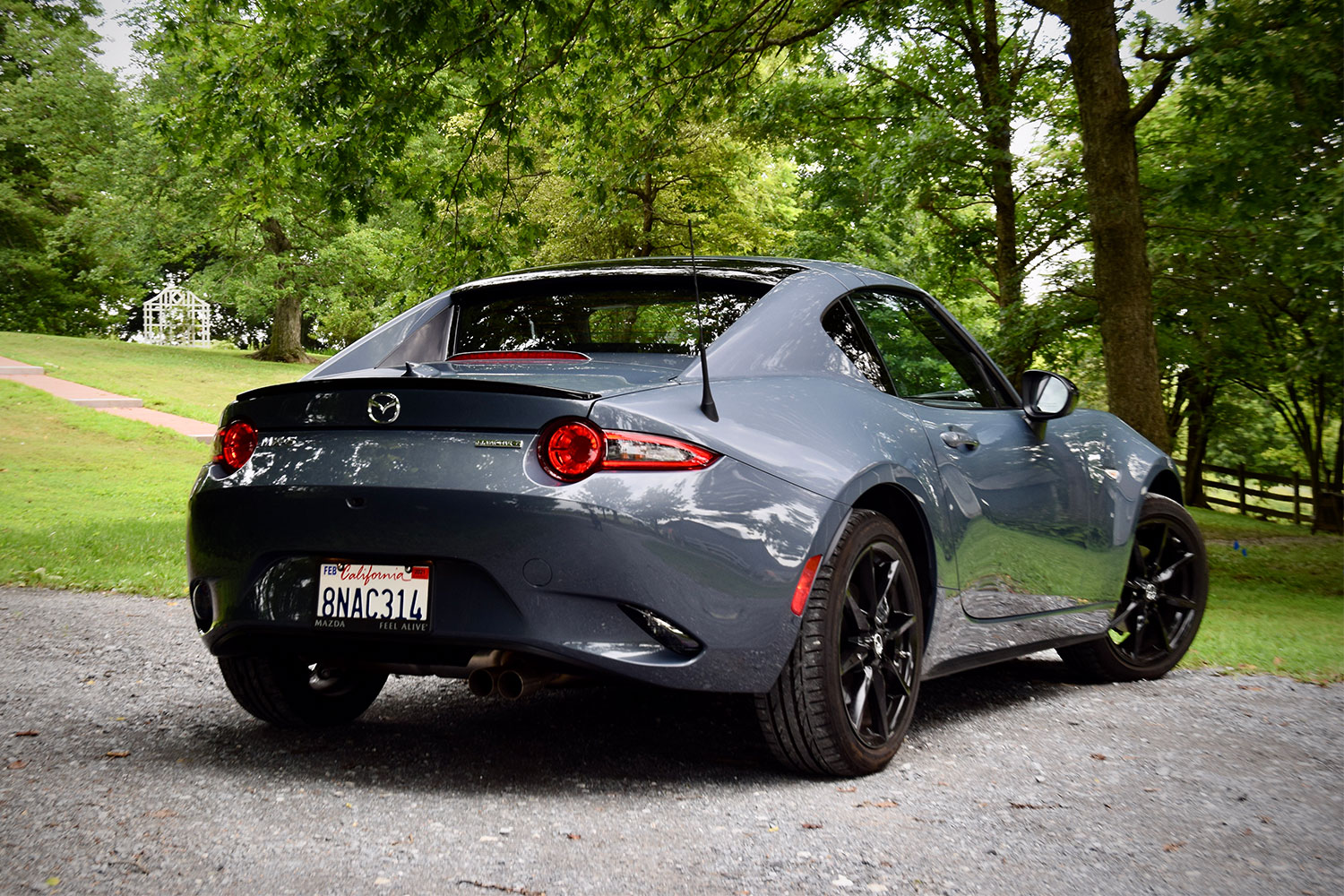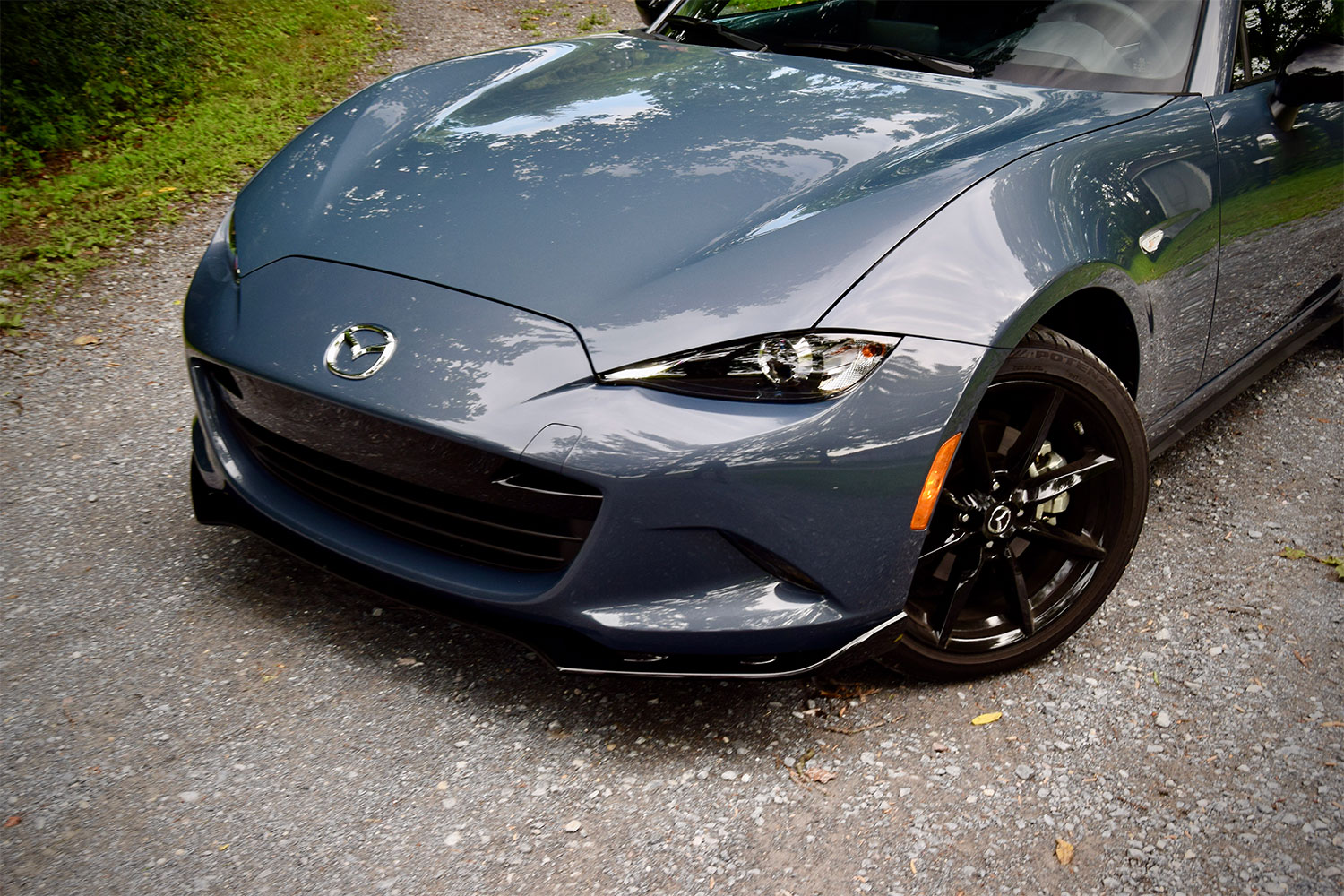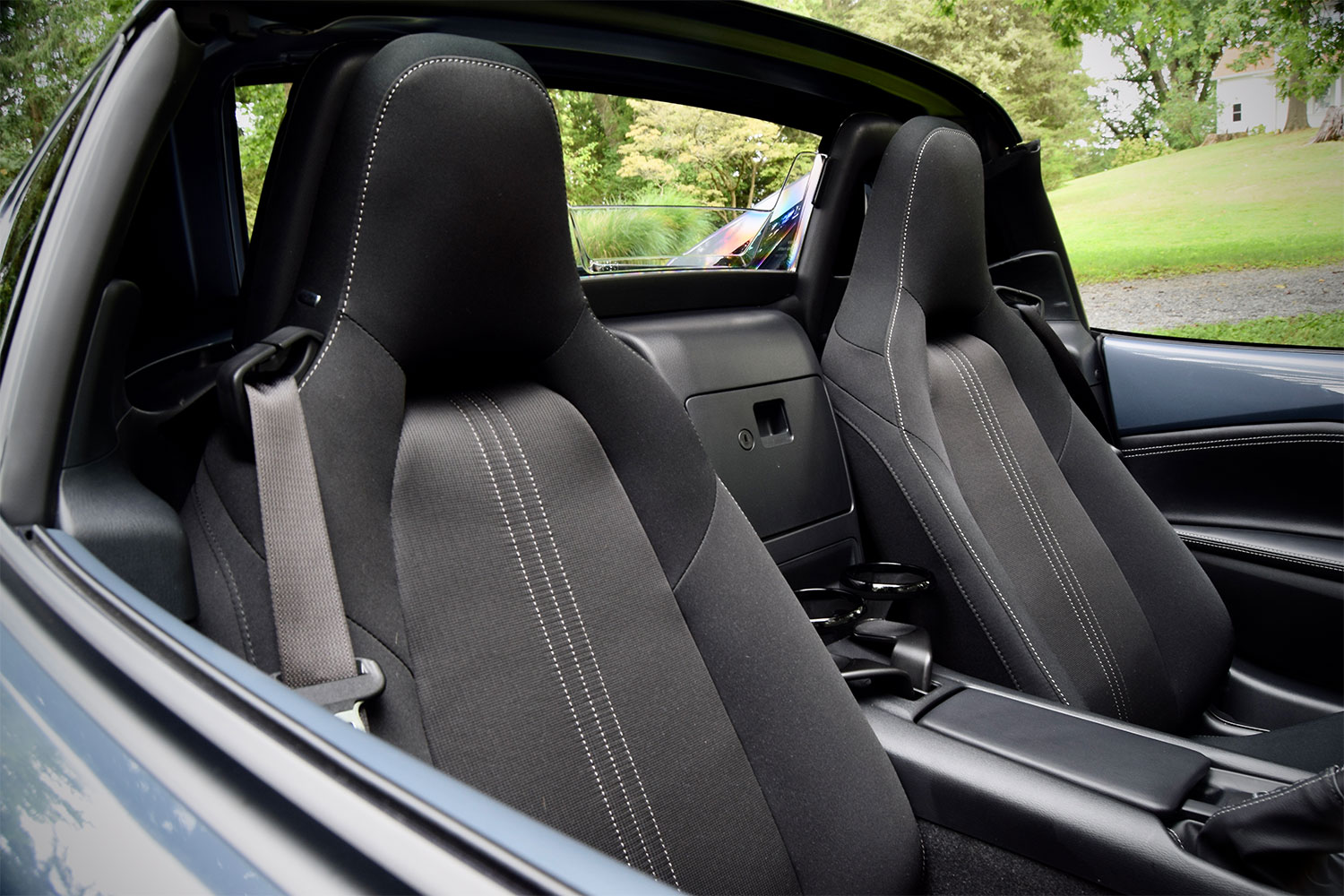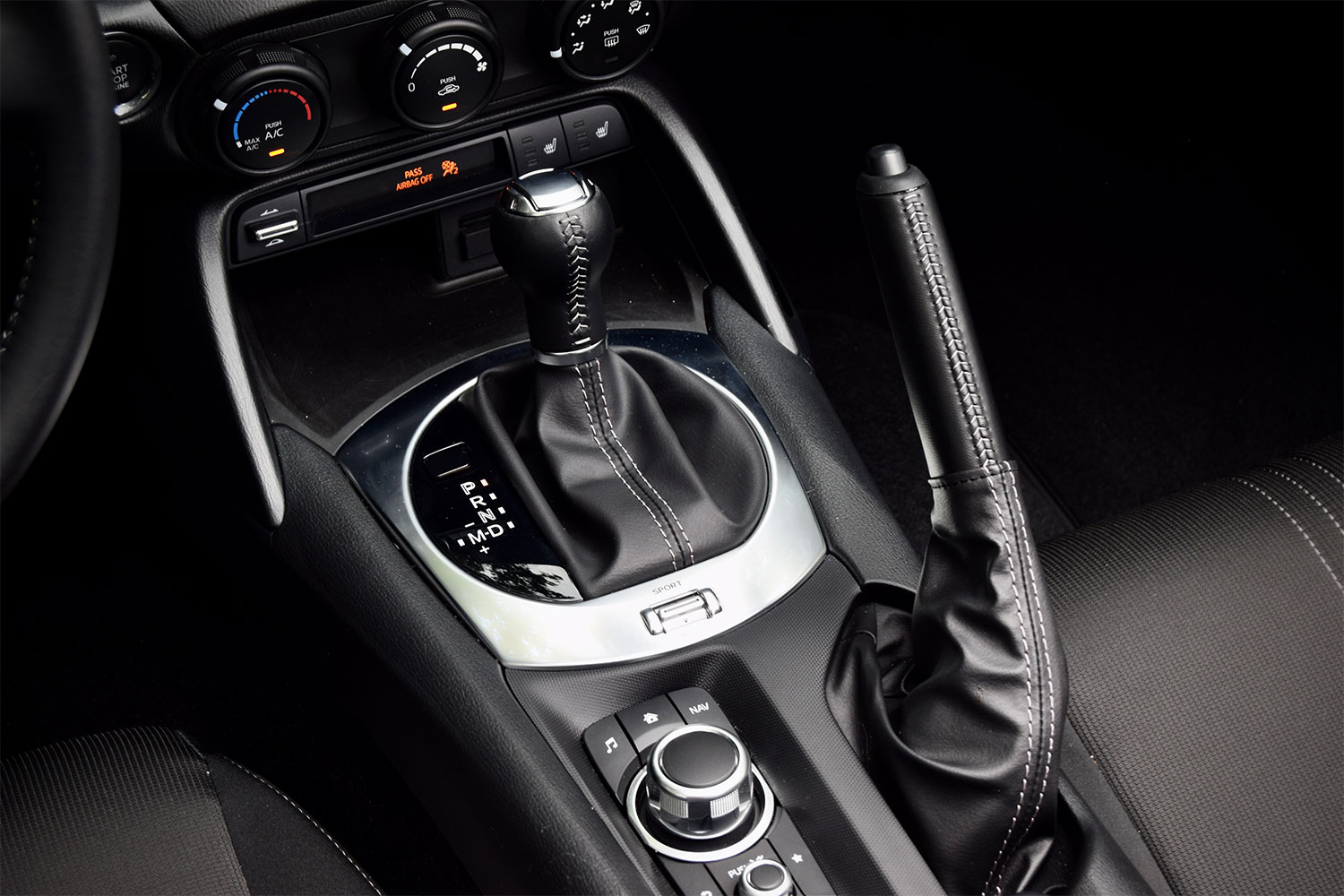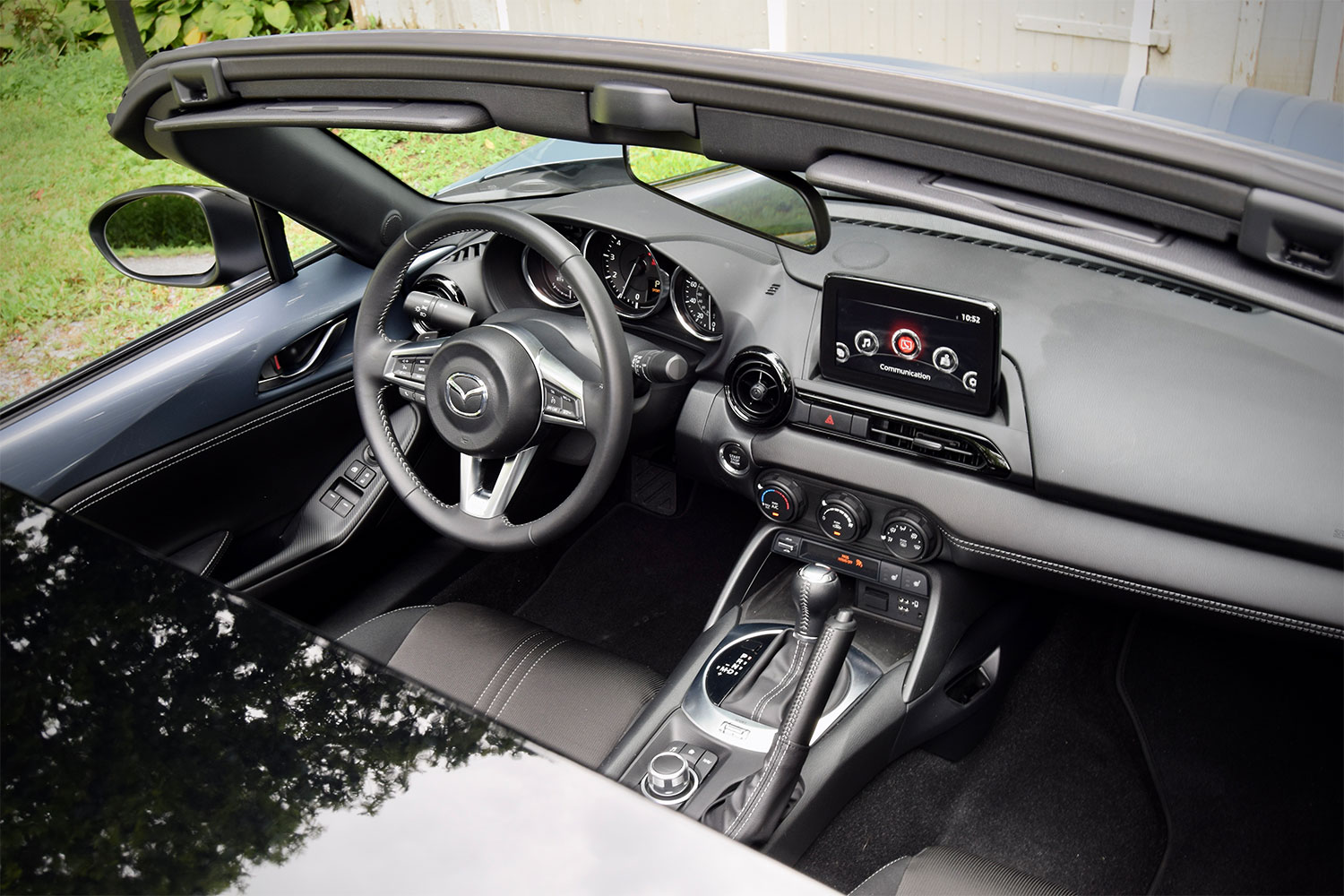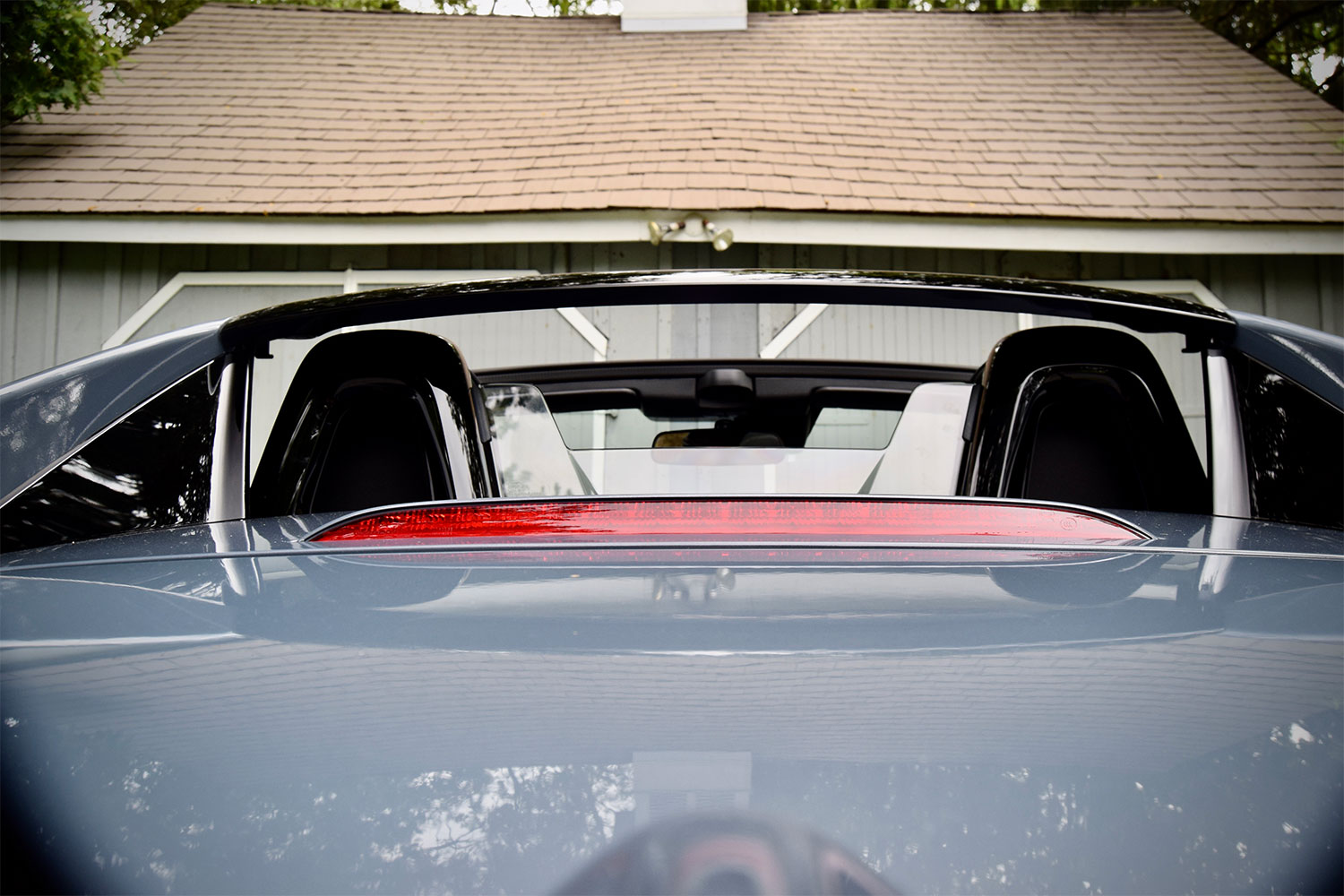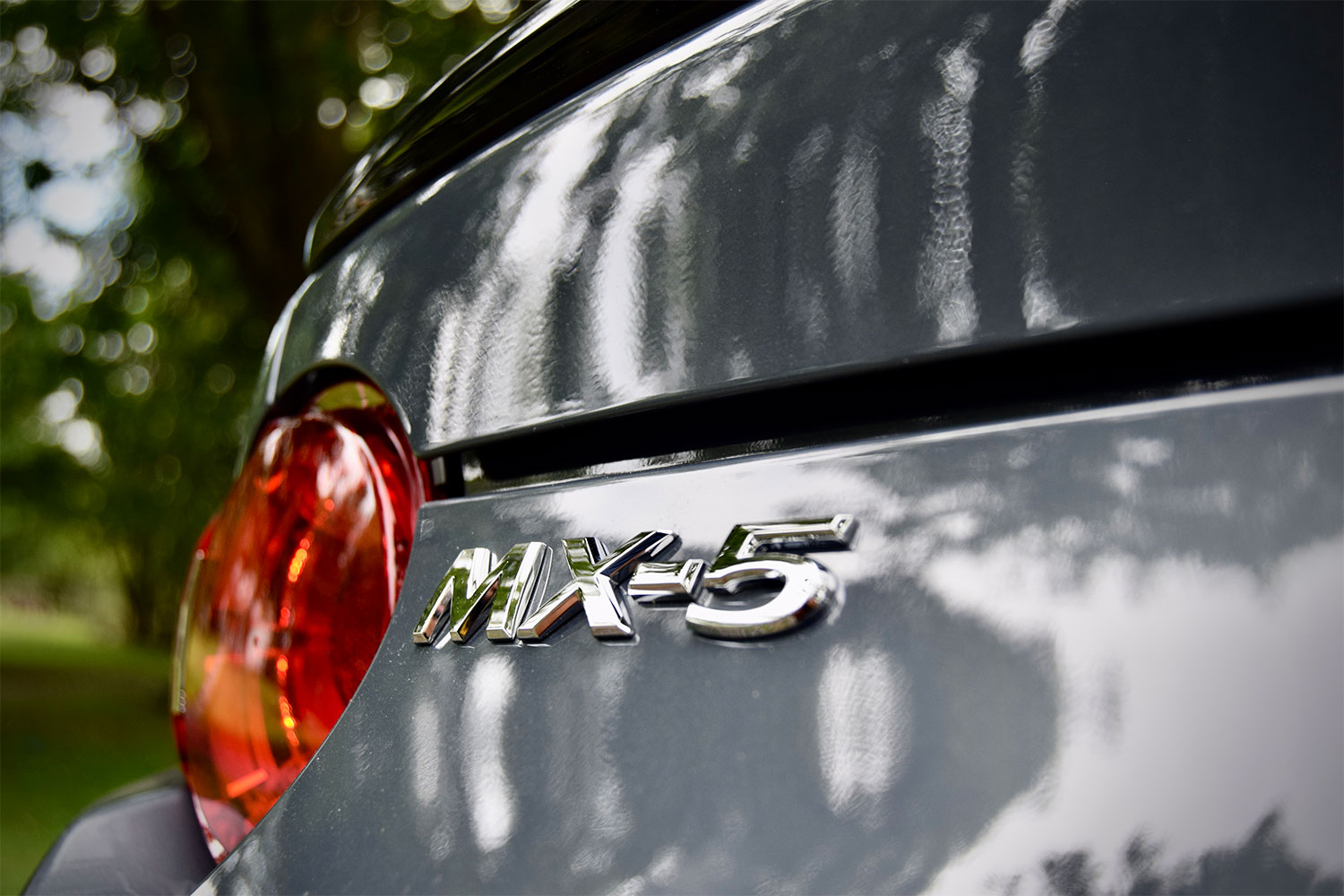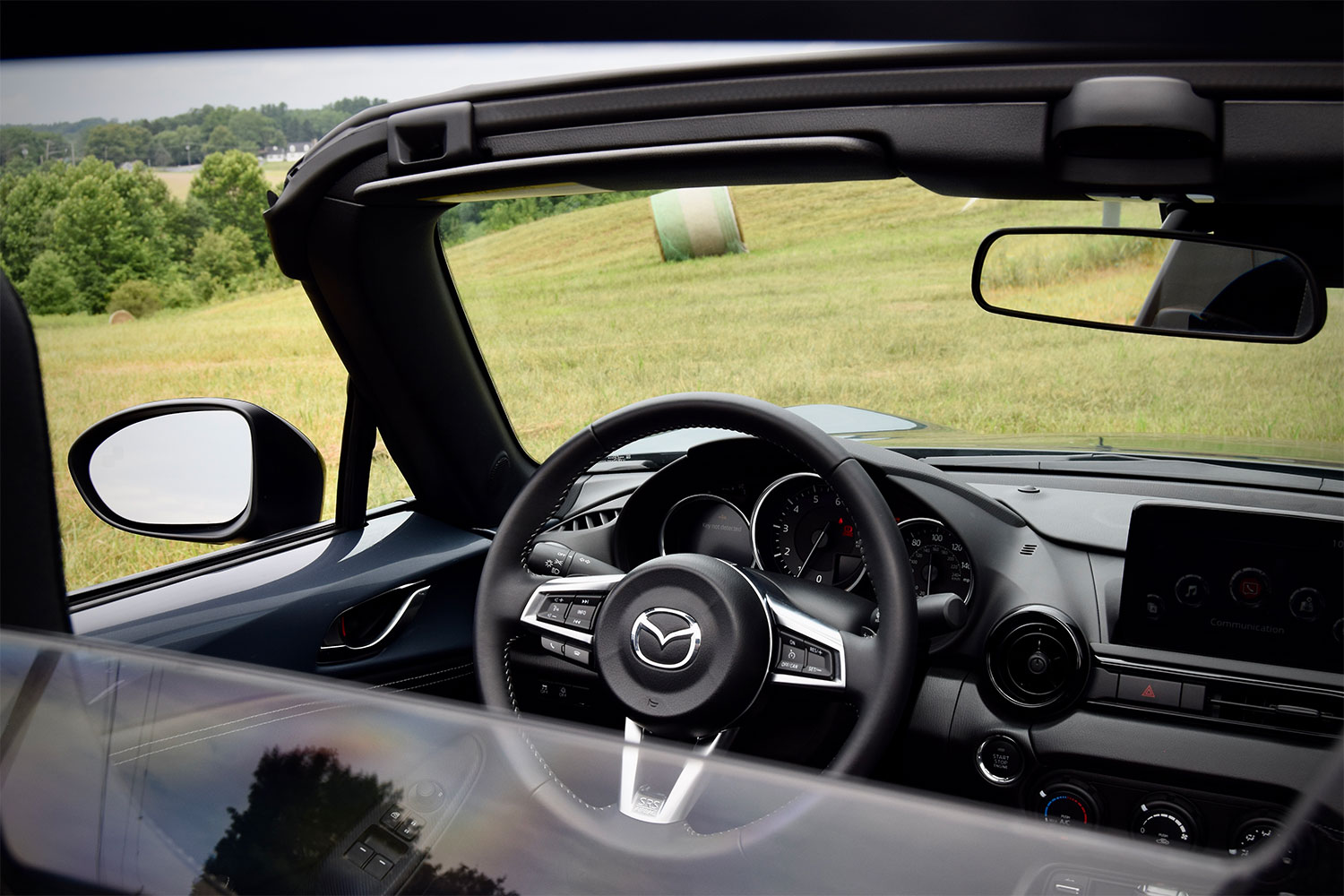There’s not much to say about the Mazda MX-5 Miata that hasn’t already been said. The convertible is part of an iconic lineage that stirs the soul without angering significant others or the local police department. It’s easily accessible, supremely enjoyable, and an absolute treasure in today’s world of overly complicated, overly powerful cars.
When Mazda told me that an MX-5 Miata RF was in the press fleet, I became giddy. I want a Miata — it’s the car I would buy if I had the money. A soft-top Club with a manual transmission and the Brembo/Recaro package, that’s the dream. Mazda told me they had a Club RF. What they didn’t tell me was that it had an automatic transmission.
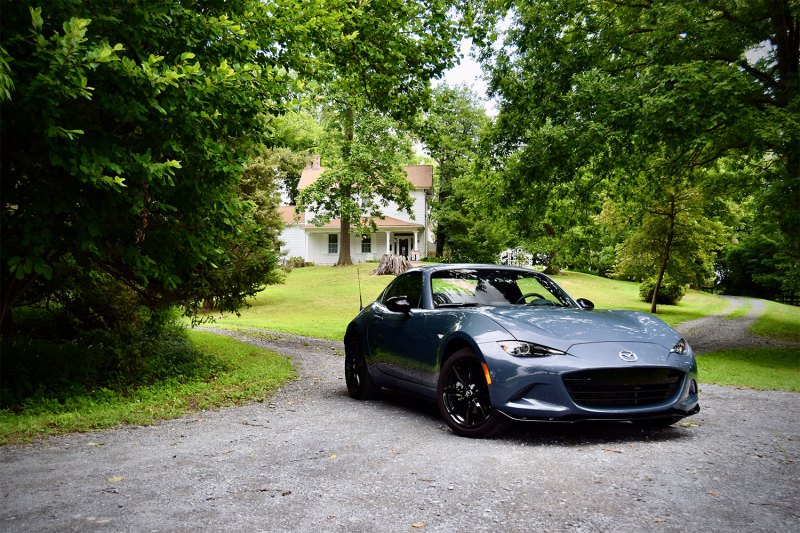
I figured that part out when keys were exchanged. One peek into the cabin is all it took for my bubble to burst. I was looking forward to this car for months. Article ideas about how I was going to wax poetic, whisper sweet things to the steering wheel, profess my love for the best sports car on the market were swirling around. All of this came to a halt the second I saw the automatic shifter.
Dramatic? Maybe, but when 80% of the vehicles you test are SUVs, you get really excited about sports cars. Plus, I’m dead serious when I say that the Miata is my favorite car on the market. My wife, ever the voice of wisdom in my life, told me to lighten up, to stop overreacting. I’m happy she did, because I’m here to tell you that even a MX-5 Miata RF with an automatic transmission is incredibly enjoyable.
The MX-5 Miata RF with an automatic transmission is the opposite of an enthusiast’s car. The intricate metal roof that gives the Miata a targa-like design when down and a hardtop when it’s up adds roughly 113 pounds to the lightweight car. Going with an automatic transmission means you don’t get a limited-slip differential, that’s the same case with the soft-top model. Weight and complexity are two things the Miata purposely staved off for decades, yet the RF adds them into the equation.
Here’s the thing about the roof. It looks gorgeous, truly spectacular. Go with the RF, and you’re no longer getting an affordable sports car. Somehow, you’ve migrated into an entirely different segment with things from Europe, at least in the looks department. If you happen to live in an area of the U.S. where you get things like rain, snow, and sleet, you’ll appreciate the hardtop. It’s quieter than the soft top and blocks out the cold when you’re hurling down the highway during a sporadic shower. It also operates quickly enough to be used at a stoplight.
If you’re like me and decide to keep the top down all the time – why wouldn’t you when it looks that good? – the only real issue is the turbulent wind that enters the cabin at 80 mph. Around town, on a Sunday cruise, or dotting around aimlessly, there’s no reason to keep the roof up. Just be sure to put some sunscreen on and make sure your hat is snug.
The Miata RF is so much more than a pretty face, though. It still has the same spunkiness, liveliness, and sharp handling that we’ve all come to love about the sports car. There’s an immediacy and sharpness to the convertible’s steering that modern electrical steering racks have all but bred out. That’s not to say the RF doesn’t have the same, laid-back character as the soft top. Bumps cause the body to jiggle with the roof down and there’s a fairly large amount of body roll for a sports car. But the chassis is just so communicative.
Don’t even try to complain about the engine. No, it’s not underpowered. The 2.0-liter four-cylinder that makes 181 horsepower is fine. You’ll get to 60 mph in just 5.8 seconds and the engine feels gutsy despite making 151 pound-feet of torque. It even makes a great, zingy sound as you approach redline. Now, to address that elephant. Does the automatic transmission ruin the perfection that is the Miata? No, no it doesn’t.
We tried to reach out to Mazda to get some official numbers on how many people are buying automatic transmissions over manuals. Instead, we were met with the boring answer of “we don’t share the take rate.” That must be a new thing, because the automaker spilled the deets to Autoblog last year. Back then, 24 percent of buyers were opting for the automatic with the soft top. For the Miata RF, it was a closer split of 48 percent for the automatic. So, it certainly looks like buyers that go with the hardtop Miata are more likely to go with the automatic.
I’m not a manual purist and I can certainly see why more consumers that choose the Miata RF opt to go with the automatic. The intricate metal roof, the higher price tag, they make the sports car feel more like a grand tourer compared to the weekend carver that is the soft top. The fact that you can’t install a roll bar into the RF means you won’t be taking it to a racetrack anytime, either.
Would I personally go with an automatic? No, but I’m not going to hold it over someone else’s head if they did. Everyone has different tastes and people want different things out of their car.
You see, manuals are fun a lot of the time. But if you commute in hours of traffic every day or do a lot of stop-and-go driving through a city, they can be a slog. The Miata RF, with its more upscale look and relaxed character (at least from the soft-top Miata), seems like it’s better suited at handling long commutes or a relaxed Sunday cruise instead of a high-performance track day.
My mom is a huge fan of convertibles. She had a major surgery on her leg earlier this year, which was followed up by a second surgery once the hospital cleared it after things with the coronavirus calmed down. I knew I had to go show her the car. So, I made the 1 hour, 15-minute hike down on a sunny Saturday.
“Is it a racecar?” were the first things she said after she looked at the Miata RF. Bless her heart. No, it’s not a racecar, but anything that’s lower than her Honda HR-V might as well be to her. We set off, with the roof down of course, with the wind blowing through our two heads of hair. As the windy roads emerged and the speed increased, she remembered my ’92 Miata and the short drives we used to go on.
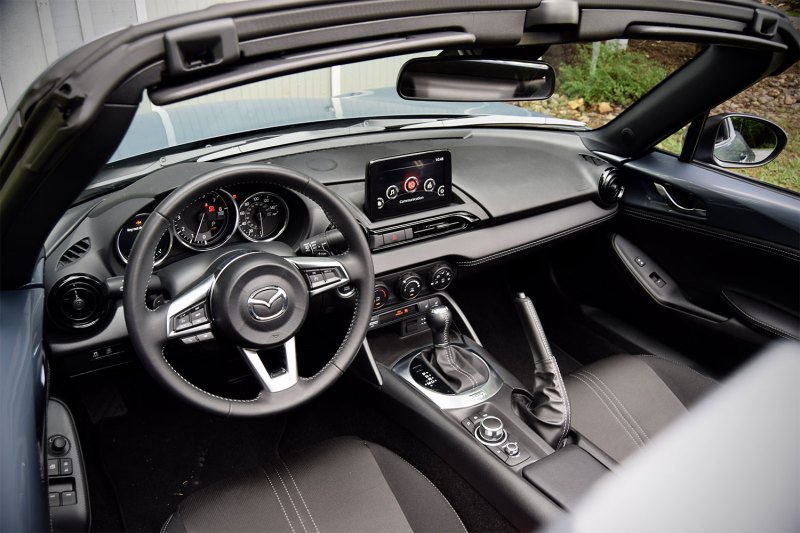
Homeowners filling their weekend with lawncare take a glancing look at the bluish-gray sports car hauling down the road. “Slow down, Joel. People might think we’re crazy!” My mom tries to appeal to my rationale side, but she knows it won’t work. If I know my mom, she secretly hopes that it won’t work. She’s having a ball and is wearing a smile that measures from ear to ear.
With the surgery, coronavirus, and the constant need to continue working long hours (she’s a nurse), I can’t remember the last time she’s smiled like this. For a brief time, we both put our hands in the air to soak in the sun and the beautiful weather. I bring mine down after a few seconds. My mom lets hers linger. I’m having a good time, but more importantly, she’s having a good time.
The MX-5 RF helped me do that. In the short 15-minute ride, I didn’t care that the sports car didn’t have a manual transmission. I didn’t care that I would’ve been more engaged or that shifts would be quicker with a manual. I know for a fact that my mom didn’t care about either of those things.
Purists can shout and yell that sports cars like the MX-5 Miata should only be purchased with an automatic. I’m not buying that malarkey. The world has changed. We now live in a place where people have to crawl through traffic just to get to their favorite roads. In my eyes, sports
Once upon a time, finding a Miata with an automatic transmission was a difficult task. That’s not the case these days, and an automatic transmission doesn’t ruin the experience or the convertible’s charm. The Miata RF, even with the six-speed auto, is still a proper Miata. This one, though, appeals more to my mom than me. There’s nothing wrong with that.

